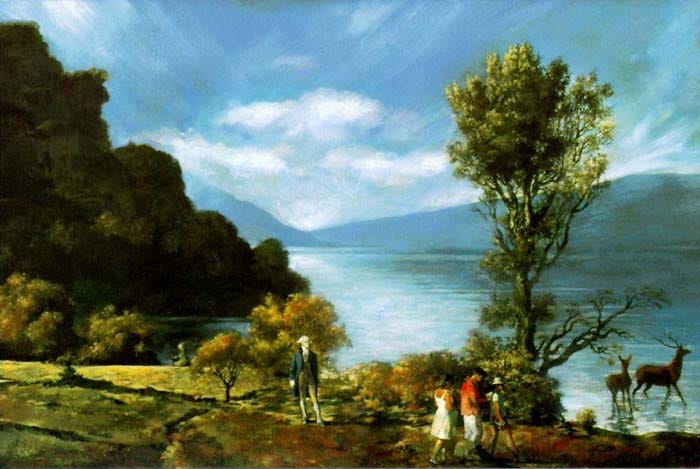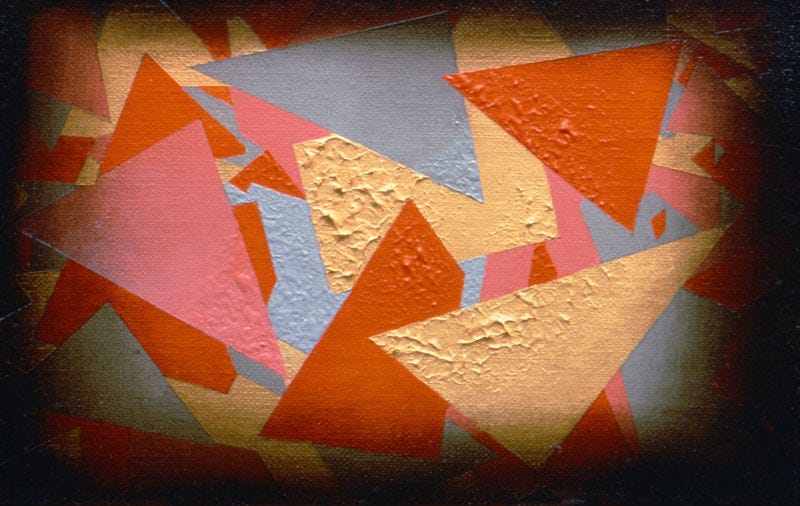Let’s imagine we have been tasked with designing Britain’s most desired home. We might commission YouGov to carry out reams of preference-polling on our behalf: we cannot embark on such a project without knowing what Britons want. So off they go to the general public: What is your favourite style of roof? Do you want to live in the city or the countryside? What local amenities matter to you?
We might be left with results that tell us 35% of people want to live in a cottage, and 68% prioritise living near a train station. Maybe just 22% prefer modernism over traditional styles.
After our statistical analysis of aesthetic and social preferences we then start to build the Best House in Britain (as decided by the Brits themselves). So what do we come up with? A thatched-roof pent house in a leafy North London suburb, just a short hop away from the Yorkshire Dales. The local park is a perfectly manicured mountain with a beach at its peak. The interior decor is mid-century modern, with Rococo accents.
There seems to be a problem. We aggregated taste preferences without thinking about how well each one coheres with the other. Our mistake is simple: we have failed to realise that just because the group likes two different things, it does not necessarily mean we want them at the same time (I like coffee and pizza but I don’t want my coffee to taste like pizza, for example). We have created a Frankenstein domicile that makes no practical or aesthetic sense.
We do not have to dwell in the realms of thought experiments. In 1993 Vitaly Komar and Alexander Melamid, two artists who left the Soviet Union in the 70s and re-located to the United States, polled Americans on their artistic tastes.
The pair - traditionally trained in the style of Socialist Realism - found 44% of respondent’s favourite colour was blue; 49% favoured outdoor scenes with water features; 60% preferred ‘dishwasher sized’ paintings (only a mere 20% wanted their painting to be the same size as a fridge); and 56% of people said they wanted historical figures over contemporary celebrities. And with that knowledge in their arsenal they made this… America’s Most Wanted.

What we are left with is a painting that might look at home nailed to the wall of an airport Hilton. It is an obvious and conscious indictment of design by committee. Perhaps it is even poking fun at the concept of democracy itself.
There is the vast blue sky punctuated with soft clouds. Deer gambol in the water beneath a fairytale tree. So far so picturesque (the Socialist Realism influence apparent). Three people walk on the autumnal banks and unbeknownst to them (though surely to their staggering surprise if they paid attention) stands George Washington. 10 points if you also spotted the yawning hippo prior to my prompt.
Even without the incongruous African wildlife and Founding Father, the painting is kitsch and twee and devoid of merit. The hippo and Washington only serve to make an already bad painting utterly incoherent - and not in a jaunty, self-aware way. As critic Arthur Danto points out, America’s Most Wanted Painting is something that no one could possibly want.
Interestingly - or perhaps unsurprisingly, depending on how generously you consider the breadth of human individuality - when Komar and Melamid extended the project across the world they found these taste preferences to be pretty universal.
From the randomly selected nations - China, Denmark, Finland, France, Iceland, Kenya, Russia, Turkey, and Ukraine - there was an obvious gravitation towards realist landscapes with trees and water and people. As Danto put it:
“The 44-percent-blue landscape with water and trees must be the a priori aesthetic universal… as if modernism never happened.”
Of course if there is such a thing as a most wanted painting then there has to be a least wanted too, right?
Right! And it is not one that indicates that “modernism never happened”. Rather, it might provoke the response “wow, I didn’t realise people hated modernism so much.”
Angles, yellows, abstraction and thick paint all proved unpopular with those polled. And so, Komar and Melamid jumbled together these contrasting triangles in textured impasto on a tiny canvas. It is also the sort of painting you might find nailed to the wall of an airport Hilton, or perhaps the result of asking an AI painting generator to make “modern art.”

So what to make of all of this?
It is too easy to dismiss it as a cruel joke designed to mock the sensibilities of laymen world over. Although our tastes may be more generic than we might want to believe, and much kitschier than I certainly bargained for, I do not think this is an exercise in sophisticates and poseurs punching down to laugh at the rabble with bad taste.
Because the problem with America’s Most Wanted is not just the mawkish preference for historical figures and nice water features. There are of course plenty of good paintings of lakes and George Washington out there. Rather the problem is thanks to its formulation: an aggregation of preferences with no consideration given to their coherence. The project is telling us that art by committee doesn’t work, and that perhaps singular genius with unique vision is required to realise artistic masterpiece.
It speaks to an anxiety Melamid himself expressed about the diminishing role of the artist:
“There’s a crisis of ideas in art… [Artists now] have lost even our belief that we are the minority that knows… That’s why we wanted to ask people.”
Painting by Numbers: Komar and Melamid’s Scientific Guide to Art (1997).
What happens when the tastemakers lose confidence? They begin to reflect what they think people want rather than what is new or good or different. But there is a reason why people who ape the style of Rothko will never be as brilliant as Rothko himself. Artists should lead from the front and be judged in retrospect, not provide a facsimile of extant public opinion. America’s Most Wanted is just an unsubtle means of delivering that quite obvious message.
In 1977, 60 years on from the October Revolution, an exhibition held in the USSR was titled Art Belongs To The People (a quote originally attributed to Lenin). But the irony of Soviet art was that the people had little say in what was produced and presented to them. As critic Ben Sutton explained the “only acceptable, government-mandated style was Socialist Realism.”
That Komar and Melamid were refugees of the Soviet Union tells us much about what America’s Most Wanted is trying to achieve. Having escaped a society that saw taste as a state-driven, top-down imposition, the lure of incorporating democracy into the art-making process is understandable. But of course the result is evidence that populism is a poor mechanism for producing anything of worth.
Komar said:
“[The] art world is not democratic society, but totalitarian one. It does not have checks and balances. Individuals who create laws and criteria are also its main decision makers.”
Painting by Numbers: Komar and Melamid’s Scientific Guide to Art (1997).
With all this in mind it is easier to shake the idea that the art world is laughing at us and the weirdly uniform taste profiles world-over. Rather America’s Most Wanted is a testament to individual aesthetic freedom; confidence to execute artistic vision divorced from popular opinion; and most importantly, the political conditions that give way to such expression.


